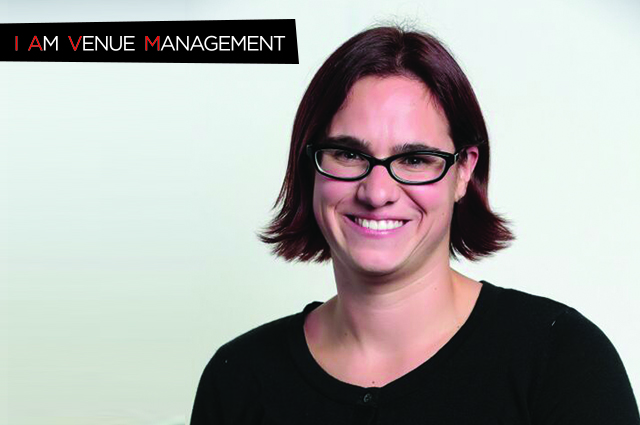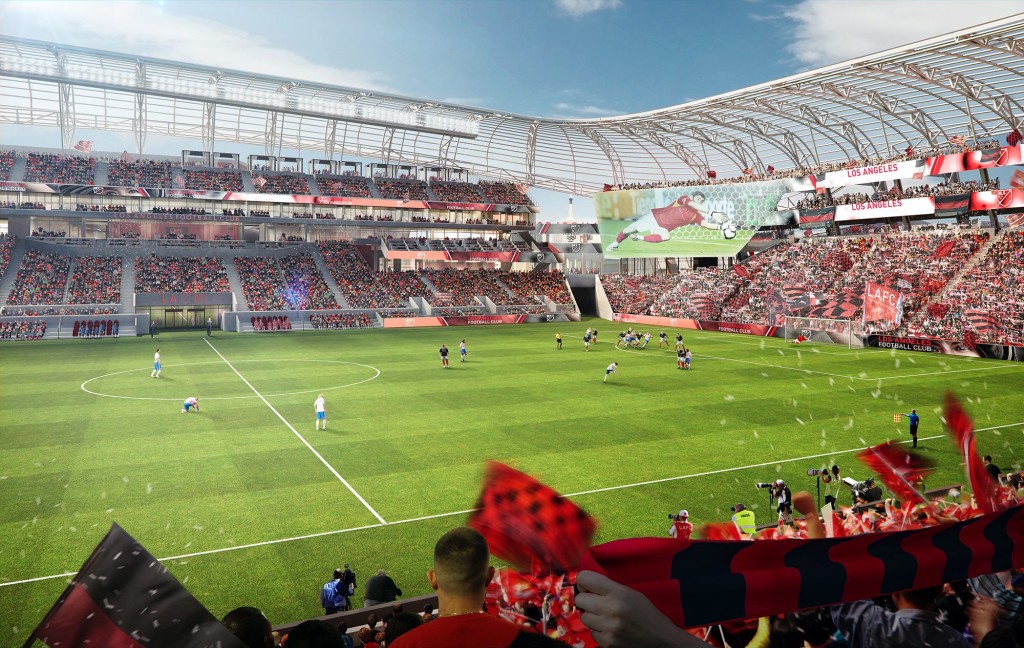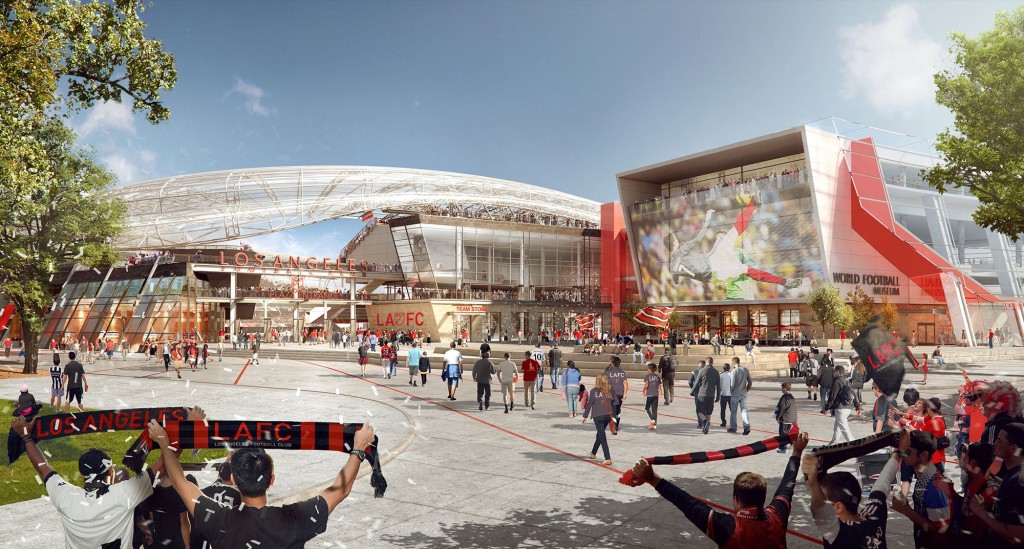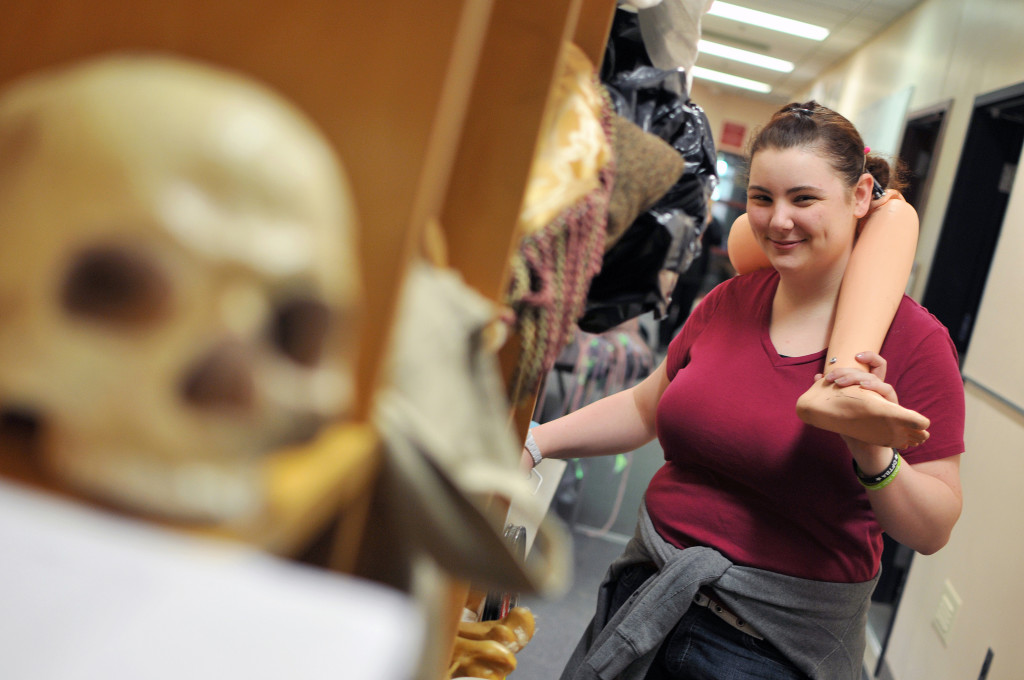TrendWatch: Mixed-Reality Gaming
We recently told you about NERF Combat Zones and how they may offer an alternative revenue stream for venues. With that in mind, you might want to keep an eye what Microsoft is doing with its HoloLens development.
The company showcased a demonstration during its recent product event in New York that was nothing short of amazing.
“The team kicked off their new products announcement with a live HoloLens demonstration that pitted one headset-wearing Microsoft employee against arachnid alien bots crawling through a living room situation in what the company is calling ‘mixed reality gaming,'” Brian Lufkin reported for Gizmodo. “The demoed gameplay, codenamed Project X, allows you to defend any room in your home (or any other building) against encroaching alien invasion.”
That’s right, you can turn your venue into a holographic game room. Even better is that it doesn’t require any wires, cords, phones, or a connection to a personal computer.
For the full effect, please watch the video above.
I Am Venue Management: Ashley Keen
You, as an IAVM member, are our most important asset. Without your commitment to the association and to the venue management industry, we wouldn’t be here. Because of your support, we are featuring member profiles in our I Am Venue Management series.
If I wasn’t doing this I’d be a: High School Drama and/or English Literature Teacher.
Most impressive person I’ve ever met: I met Adam and Jaime from MythBusters backstage at work not too long ago. I spent a long time talking to them about building a t-shirt cannon for one of their upcoming live shows. That’s probably my biggest “star-struck” moment.
I unwind by: working out at the aerial gym.
On my desk right now: are lots of toys. I have Legos, figurines, and an electronic cat bank. If anyone is ever having a bad day, I invite them to sit in my chair and use the cat bank. It looks like a cardboard box. When you put a coin on top of the box, a cat comes out and steals your money. It instantly makes any bad day better. I even have a stash of change specifically for use in the cat bank.
My favorite IAVM program/conference/event/session I ever attended was: Jason Robert’s keynote speech at VenueConnect this year. His Build a Better Block program is amazing, and I found his whole approach to life very inspiring.
If I were on the other side out on the arena field concert stage I’d be an: aerial artist!
One trait an up-and-coming venue manager should have is: an eagerness to learn.
One of my goals for this year is to: help my department grow.
I plan to help elevate the profession: by always showing professionalism, patience, kindness, and humility.
Where do you see new growth opportunities in the profession? Technology is becoming more prevalent and constant in all our lives. I think we will start seeing more and technology incorporated in our live experiences. We, as an industry, need to embrace the prevalence of technology in our patrons’ lives. I think we will start seeing more incorporation of their devices into our events.
How do you stay current with industry trends and developments? Read, read, read, read, read.
Who are three people you’d invite to a dinner party and why? Do they have to be alive? I would love to spend time talking to Andy Warhol, Salvador Dali, and Pablo Picasso. I would want to hear from each of them where they found inspiration for their art and what the meaning behind some of my favorites are. If they have to be living… I’d say David Sedaris, Agusten Burroughs, and Neil Gaiman. All three of them have stories to tell. I would sit and listen to them share.
Ashley Keen is the technical director/production manager at the Mesa Arts Center in Tempe, Arizona.
(Image: Orange Photography)
Los Angeles Football Club Releases New Stadium Renderings
Los Angeles Football Club (LAFC) won’t begin playing in Major League Soccer until 2018 or 2019 as an expansion team, but that hasn’t stopped them from planning one of the premier soccer venues not only in the U.S., but the world.
Recently, LAFC ownership, staff, and Gensler held a Stadium Design & Programming workshop with their future supporters to receive feedback on what they are looking for in their stadium. Included in the workshop were discussions on the design of the supporters’ section and entrance, pre-game festivities outside the stadium, mobile apps, as well as other in-stadium technology.
Read more about the Stadium Design & Programming workshop hosted at Gensler’s L.A. office here. (I’d like to remind you that Gensler is currently working with IAVM on our brand evaluation, too.)
Additionally, in the recently published “LA 2024 Olympic Bid,” the new stadium would serve as the aquatics center, spending US$100 million on the temporary pool as you can see in the renderings.
With new soccer specific stadiums popping up all over North America annually, will you find yourself working in a soccer venue in the near future?
(Images: LAFC Facebook)
Video: George Wein and Music Festivals
George Wein turned 90 years old on October 3. Wein, the founder of the Newport Jazz Festival, is considered a genius in the industry for his success in organizing and booking music festivals. His age, though, hasn’t stopped him from attending his own festivals.
“If I don’t hear the music, I don’t know what my festival is all about,” Wein says. “So I have to hear the music.”
Wein talks about the jazz and folk festivals he curates in the video above from NPR. Take seven minutes and watch a great piece about an even greater person.
It’s Time Again for International Stage Management Day
Just like last year, October 10 is International Stage Management Day.
The day celebrates stage managers and the work they do to ensure smooth operations. Past ways companies have celebrated stage management day have been letting stage managers take over social media feeds, catering special lunches for them, and promoting them in programs.
“It seems to be a chance to network and celebrate all the backstage really,” Andy Rowley, executive director of the Stage Management Association told The Stage last year. “Stage managers are such a lynchpin backstage that they could hardly do it without all their colleagues—so it’s becoming more of a celebration backstage full stop.”
Please let us know how you’re planning on celebrating International Stage Management Day this year. If you want to follow the celebration on Twitter, the hashtag is #StageMgrs15.
(Image: University of the Fraser Valley/Creative Commons)
Do you want to receive a Front Row News weekly digest?
Categories
- Allied (861)
- Architecture (147)
- Arenas (747)
- Career (897)
- Convention Centers (895)
- Education (623)
- Events (1,544)
- Food & Beverage (193)
- Foundation (113)
- Guest Experience (1,496)
- Industry News (2,270)
- Leadership (1,888)
- Marketing (150)
- Membership (2,000)
- Music (213)
- Performing Arts Centers (454)
- Professional Development (409)
- Research (127)
- Safety & Security (442)
- Sports (763)
- Stadiums (608)
- Student (159)
- Technology (516)
- Ticketing (92)
- Touring (82)
- Trends (364)
- Uncategorized (742)
- Universities (218)
- Video (25)
- Young Professional (198)
Twitter Feed
- Twitter feed loading
Recent Posts
- Seattle Convention Center Announces Strategic Leadership Appointment and Growth Initiatives for 2026
- Peggy Daidakis Humbly Made Convention Center History
- Welcome to Our Newest Members
- New Member Benefit! IAVM Partners with Advantage Training to Elevate Staff Readiness and Guest Experience
- Charlotte Convention Center Welcomes Two New Leaders to its Management Team
Categories
- Allied
- Architecture
- Arenas
- Career
- Convention Centers
- Education
- Events
- Food & Beverage
- Foundation
- Guest Experience
- Industry News
- Leadership
- Marketing
- Membership
- Music
- Performing Arts Centers
- Professional Development
- Research
- Safety & Security
- Sports
- Stadiums
- Student
- Technology
- Ticketing
- Touring
- Trends
- Uncategorized
- Universities
- Video
- Young Professional
Archives
- December 2025
- November 2025
- October 2025
- September 2025
- August 2025
- July 2025
- June 2025
- May 2025
- April 2025
- March 2025
- February 2025
- January 2025
- December 2024
- November 2024
- October 2024
- September 2024
- August 2024
- July 2024
- June 2024
- May 2024
- April 2024
- March 2024
- February 2024
- January 2024
- December 2023
- November 2023
- October 2023
- September 2023
- August 2023
- July 2023
- June 2023
- May 2023
- April 2023
- March 2023
- February 2023
- January 2023
- December 2022
- November 2022
- October 2022
- September 2022
- August 2022
- July 2022
- June 2022
- May 2022
- April 2022
- March 2022
- February 2022
- January 2022
- December 2021
- November 2021
- October 2021
- September 2021
- August 2021
- July 2021
- June 2021
- May 2021
- April 2021
- March 2021
- February 2021
- January 2021
- December 2020
- November 2020
- October 2020
- September 2020
- August 2020
- July 2020
- June 2020
- May 2020
- April 2020
- March 2020
- February 2020
- January 2020
- December 2019
- November 2019
- October 2019
- September 2019
- August 2019
- July 2019
- June 2019
- May 2019
- April 2019
- March 2019
- February 2019
- January 2019
- December 2018
- November 2018
- October 2018
- September 2018
- August 2018
- July 2018
- June 2018
- May 2018
- April 2018
- March 2018
- February 2018
- January 2018
- December 2017
- November 2017
- October 2017
- September 2017
- August 2017
- July 2017
- June 2017
- May 2017
- April 2017
- March 2017
- February 2017
- January 2017
- December 2016
- November 2016
- October 2016
- September 2016
- August 2016
- July 2016
- June 2016
- May 2016
- April 2016
- March 2016
- February 2016
- January 2016
- December 2015
- November 2015
- October 2015
- September 2015
- August 2015
- July 2015
- June 2015
- May 2015
- April 2015
- March 2015
- February 2015
- January 2015
- December 2014
- November 2014
- October 2014
- September 2014
- August 2014
- July 2014
- June 2014
- May 2014
- April 2014
- March 2014
- February 2014
- January 2014
- December 2013
- November 2013
- October 2013
- September 2013
- August 2013
- July 2013
- June 2013
- May 2013
- April 2013
- March 2013
- February 2013
- January 2013
- May 2012
- March 2012
- December 2011
- November 2011
- October 2011
Recent Comments
- Frank Bradshaw, Ph.D., CVE on John Meyer, CVE, a Tireless Advocate of Certification for Venue Professionals, Has Died
- Neil Sulkes on Hilary Hartung, Friend to Many in Venue Marketing, Has Left Us
- Jason Parker, CVE on The Devastation of Hurricane Helene and How We Can Support One Another
- Larry Perkins on Touhey Testifies Against Speculative Ticketing Before Congressional Subcommittee
- Peter Secord on Major Players for Planned Elkhart Amphitheater Were in the Mix at VenueConnect





